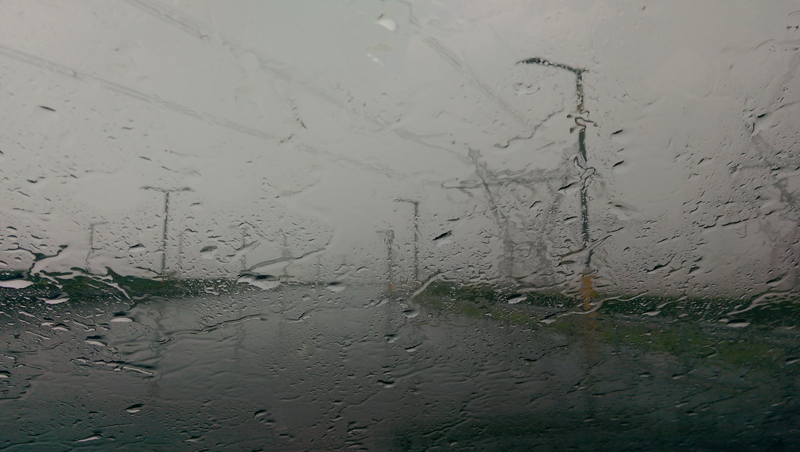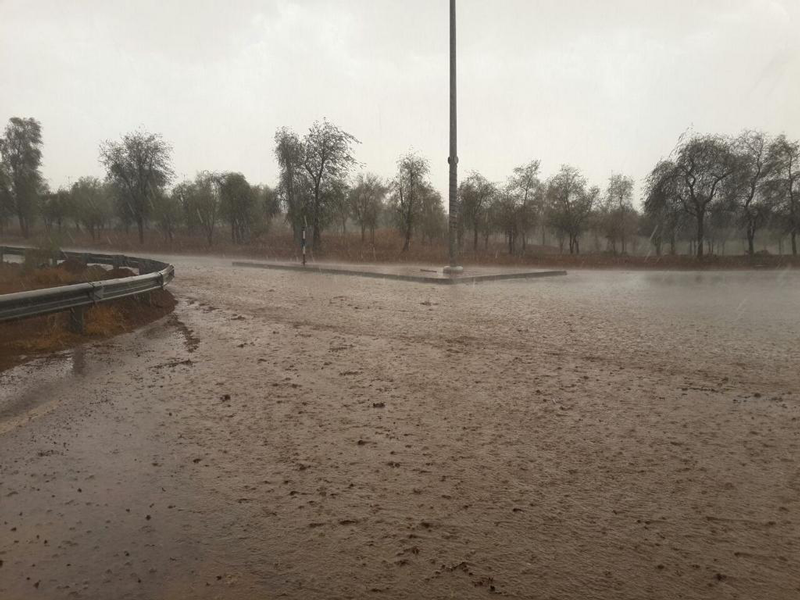The United Arab Emirates saw all the characteristics of a summer storm yesterday, with thunderous rain falling in parts of the country and a raging sandstorm by the late afternoon, reducing visibility to 500 metres.
A lightning strike also sparked a fire in Al Ain, but it was quickly put out by civil defense forces.
 Photo: Joseph George
Photo: Joseph George
Meanwhile, the UAE National Center for Meteorology and Seismology (NCMS) said the low pressure system was expected to continue for another 24 hours, bringing further rain to the east of the country and scattered sandstorms until Tuesday evening.
An NCMS spokesperson said: Emirates 24|7“This weather will continue at times over the next 24 hours. This is due to a low pressure system centred over the southwestern UAE.
“The upper-level low pressure accelerated, causing wind speeds at the surface to reach 45-50 kilometres per hour, stirring up sand and reducing visibility in parts of the country.”
 Photo: Muna Ahmad
Photo: Muna Ahmad
The spokesman continued, “However, due to increasing convective clouds, rain is expected to continue on Tuesday, mainly in the eastern areas near Fujairah and south of Al Ain.”
Click here for photos and video of yesterday’s storm in Al Ain
Thunderstorm
As wind speeds increased on Monday afternoon, light to moderate rain fell in parts of Dubai, Abu Dhabi and Al Ain, with the Garden City taking the brunt of the storm and sparking small fires caused by lightning strikes.
As strong winds and sandstorms reduced visibility, uprooted trees and disrupted transport in many areas, the country’s National Committee for Emergency Crisis and Disaster (NCMEA) issued a set of advice to survive the storm conditions.
“If you are in your car and experience high winds, please leave your vehicle and head to the nearest safe location. Make sure you park your car in a safe place to avoid potential storm damage,” the group wrote on Twitter.
“Children with respiratory, asthmatic or allergy conditions should not be allowed outside except in emergencies. Do not allow children to play outside the home.”
NCEMA continued: “Ensure that any garden tools at home are securely fastened. Keep all windows tightly closed and supported with wooden boards. Listen and check weather forecasts, official media and social media websites.”
Maritime warning issued
While neighbouring Oman has been hardest hit by the summer storm, the NCMS also issued a marine alert in the UAE, warning fishermen to expect rough seas, waves exceeding six feet and high waves could hit the Kalba coast.
“We do not expect parts of the country to be flooded, but a marine warning is in force until Tuesday in the Arabian Gulf and the Sea of Oman advising people to be aware of high waves and rough seas,” an NCMS spokesman said.
Is summer over?
As the freak storm caused chaos across the country, many people took to social media to question whether the rain was a sign that summer was finally drawing to a close.
“August is historically the month when temperatures drop from July’s scorching heat, but this is not the case this year. Maximum temperatures on Sunday reached 49.5°C in Sweihan, nearly 49°C in Al Shaab and one degree cooler in Zayed City,” the NCMS said.
The spokesman continued: “Temperatures have risen to nearly 50 degrees in inland parts of the country over the past few days and are set to remain so as we approach September, when temperatures will drop by an average of three degrees.”
![]() Follow Emirates 24|7 on Google News.
Follow Emirates 24|7 on Google News.


